
Inauguration of India’s first net zero energy building with solar system designed by Sweden
On August 31, India’s first net zero building was inaugurated. One of the installations contributing to the goal is a solar plant from the Swedish company PPAM Solkraft.
The building in question is located in Hyderabad and is the office of the Confederation of Indian Industry’s (CII) green energy centre of excellence – Godrej Green Business Centre. This is a centre for energy-efficient buildings, green energy and green production, and its mission is to help Indian industry develop in a more sustainable direction and be influenced by international and indigenous innovative solutions.
There are thousands of visitors to the centre each year. In conjunction with the building’s 15th anniversary, it is now time to update the facility and make it a net zero building. PPAM Solkraft’s PV construction is an important puzzle piece in this.
“From the start in 2004, the building has been built around the most energy-efficient solutions. Now is the time to update the entire centre with new solutions, also considering the energy supply, and companies from the ISIA program are able to contribute,” says Ludvig Lindström, international business developer at the Swedish Energy Agency.
Swedish solutions contribute to net zero building
The Swedish company Regin has previously installed equipment that automates the building. PPAM Solkraft has now also contributed to the development. PPAM’s solar power system of 125 kW and their innovative technical expertise will contribute to making the whole plant a net zero building. The project includes four different ways of using the double-sided solar panels in real-life conditions: laying flat with a reflective surface underneath, placed upright with each side facing east and west respectively, as a tracker that follows the sun throughout the day and conventional placement tilted towards the sun.
“Our multifunctional solar panels have made this building net zero. It has been a pleasure to develop this with the CII. Their network and role in the Indian industry can also contribute to an important step forward for PPAM’s operations in India,” says Andreas Molin, CEO of PPAM Solkraft.
“With this launch, the CII has demonstrated that existing buildings can become net zero energy buildings,” says Kiran Ananth, principal counsellor at CII-GBC i Hyderabad.
ISIA is a stepping stone to the Indian market
PPAM participated in the ISIA program during 2015–2016. The program helps Swedish companies prepare for an introduction to the Indian market. India’s business culture is a little different from the Swedish one and is characterized by ‘seeing is believing’, i.e. reference installations in the country need to be showcased. It is also of great importance that the Swedish companies can adapt their products and services for the Indian market.
“If it wasn’t for the ISIA program, we would not have known an ingenious technology provider like PPAM Solkraft, who with their innovative bi-facial panels have helped CII Godrej GBC building generate more power within our roof area available and help us design for net zero status. With a successful demonstration at CII Godrej GBC building, PPAM Solkraft can certainly expect many more business engagements from buildings in India aspiring to become net zero energy buildings,” says Kiran Ananth.
PPAM has continued to work with several different innovative system solutions around their highly efficient solar panels, which were initiated during the program. One project was a venture with the Ministry of New and Renewable Energy aimed at phasing out diesel in the Andaman Islands. There, PPAM developed a hybrid solution for a hospital with solar, biogas and hydrogen as balance and energy storage. As the hospital needs oxygen, a viable business model could be presented.
Another idea is to use the company’s double-sided solar panels as a sound barrier and safety railing on the Delhi Metro, which runs mostly above ground and inbetween buildings. These discussions are still ongoing.
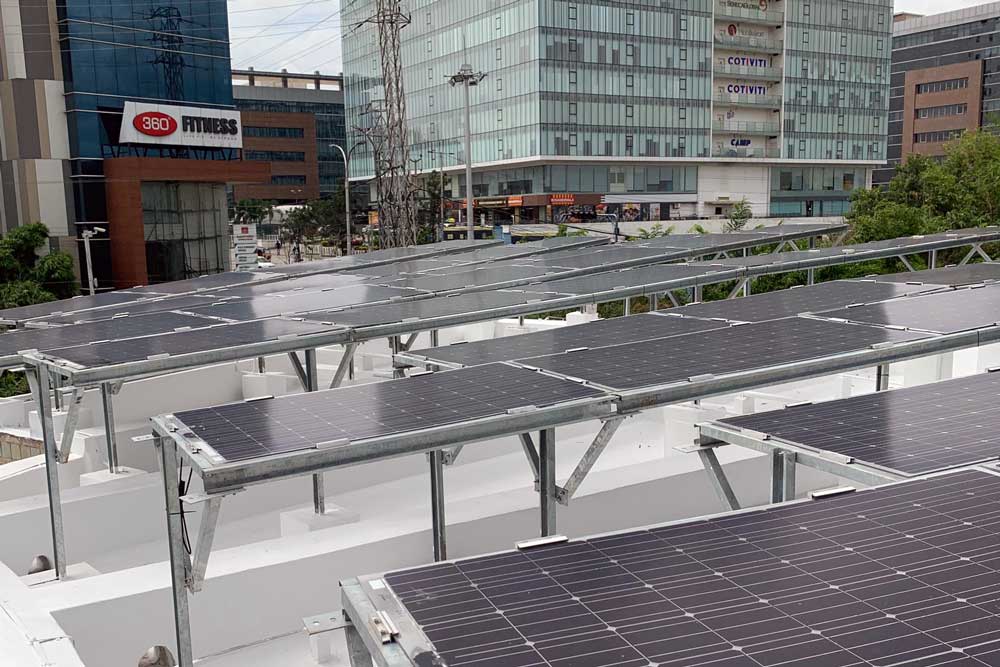
Double-sided horizontal panels. The white surface underneath reflects the light.
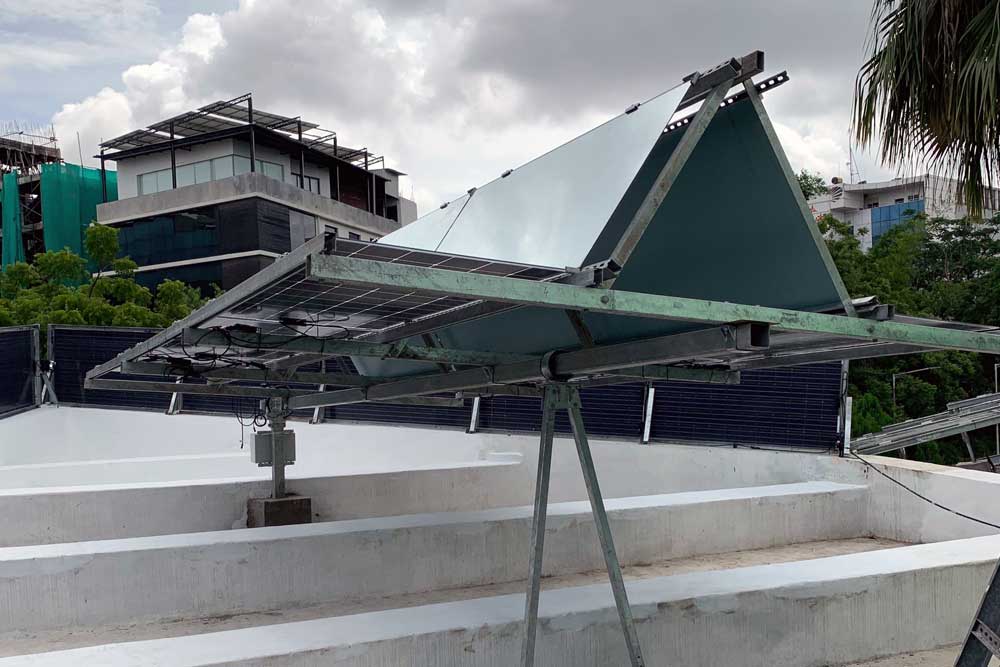
The panels track the sun throughout the day.
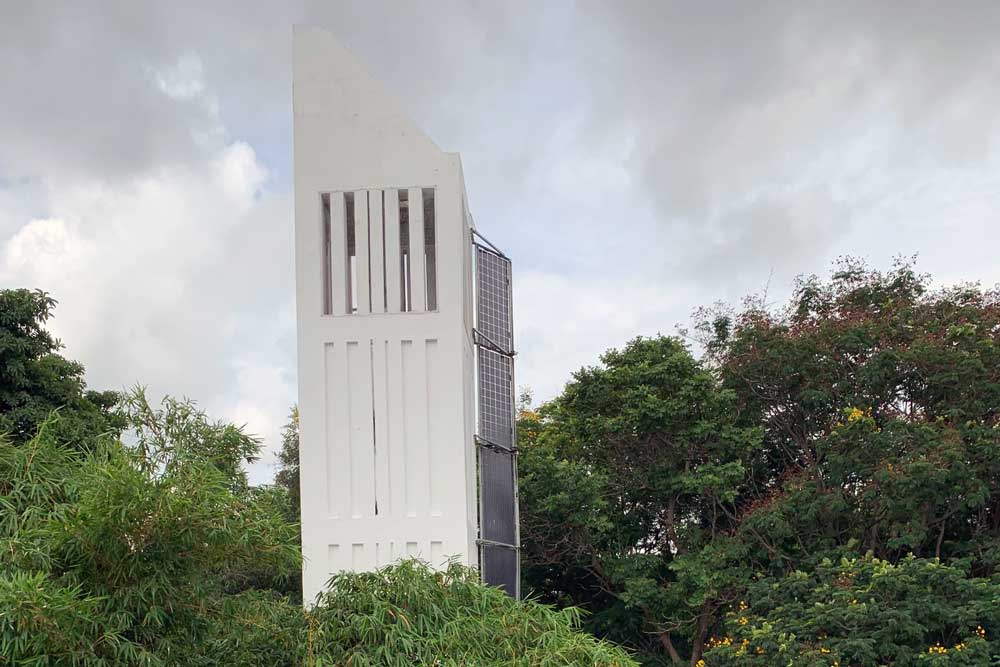
Vertical solar panels placed on a cooling tower, facing east and west.
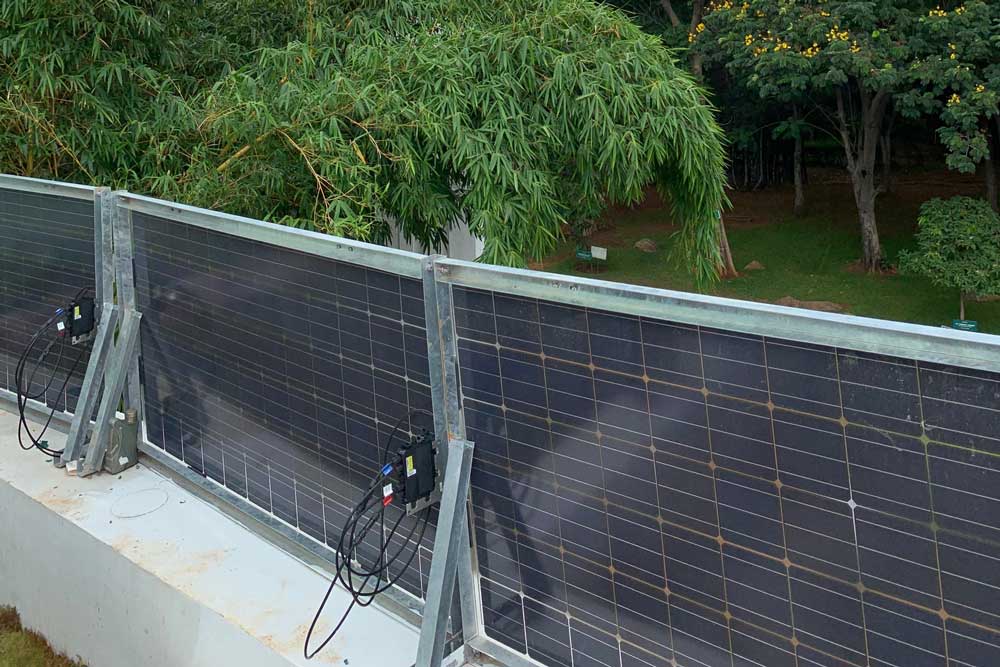
Vertical panels used as safety railing.
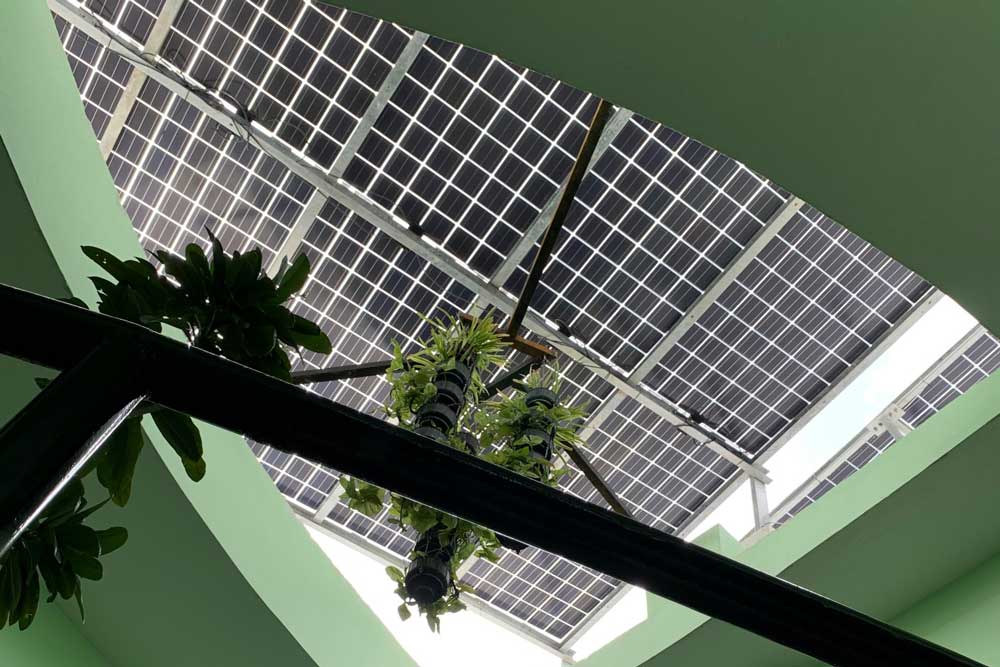
The panels create a semi-transparent roof over the atrium.